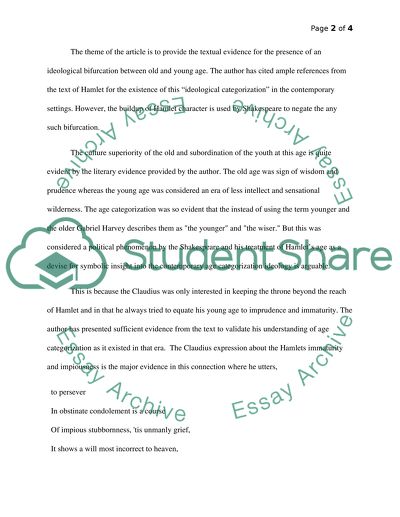Cite this document
(“Arguments Around the Treatment of Hamlet by Shakespeare Article”, n.d.)
Arguments Around the Treatment of Hamlet by Shakespeare Article. Retrieved from https://studentshare.org/literature/1410055-compose-a-paper-that-explores-a-theoretical
Arguments Around the Treatment of Hamlet by Shakespeare Article. Retrieved from https://studentshare.org/literature/1410055-compose-a-paper-that-explores-a-theoretical
(Arguments Around the Treatment of Hamlet by Shakespeare Article)
Arguments Around the Treatment of Hamlet by Shakespeare Article. https://studentshare.org/literature/1410055-compose-a-paper-that-explores-a-theoretical.
Arguments Around the Treatment of Hamlet by Shakespeare Article. https://studentshare.org/literature/1410055-compose-a-paper-that-explores-a-theoretical.
“Arguments Around the Treatment of Hamlet by Shakespeare Article”, n.d. https://studentshare.org/literature/1410055-compose-a-paper-that-explores-a-theoretical.


